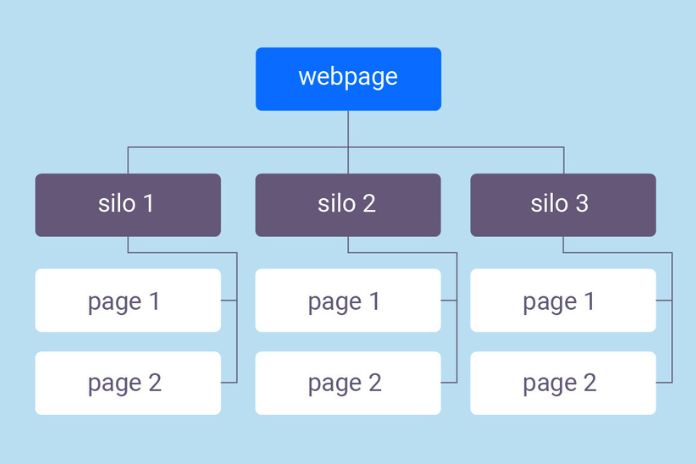Learn how to improve your website’s performance. See silo structure examples to learn how to apply this strategy. A well-defined structure will make a good impression on the user.
Silos are significant places for grain storage, which have the function of optimizing and conserving this product.
In marketing, we use the term silos for a specific way of organizing sites. This method is also known as “parent and child structure”: the most comprehensive posts are the “parents”, and the smallest are the “children”.
When developing your silo structure, all posts must have links that make the connection between the contents. The idea here is to make navigation easier for the reader. As he wants to delve into a subject, he navigates between the posts.
To create this silo structure, you need to have a strategy. Define your site’s macro objective and the path the user will take.
If you want to succeed with your Silos structure, you must be very careful and think about the strategy. There needs to be a plugin or something automatic to do the work for you. The structure of silos has to be designed manually.
Advantages Of Using A Silo Structure
Improve Quality In The PageRank Stream
PageRank is an algorithm used by Google to rank websites. When using the search engine, it determines which page will appear in the first results. For this, it evaluates the authority of the sites for each content. If you have a blog about recipes, PageRank will assess how much of an expert you are on the subject and how relevant and original your content is for those searching for this topic.
When you use the silo architecture, you show that you understand the subject and can answer searches from different types of users according to the depth they want.
Enhance The Customer Experience
With the silo structure for SEO, we can have a hub (hubs are spaces – physical and virtual – in which companies and startups can work and have access to contacts, investors, mentors and suppliers),
In this way, the user can reach their destination faster. He does not need to click several buttons on the site to access what he needs, as access is simplified.
A good example is the Apple website logo on Home, which already offers the category of products and the list of offers it has. You can easily navigate between cell phones, tablets, watches, chargers, covers, and televisions. Sites that use the silo structure are intuitive and easily navigable.
Facilitate Strategic Internal Link-Building
Distributing links strategically among the most critical pages on your site helps it rank and increase its authority. Google’s John Mueller agreed that a good structure improves your site’s rankings.
Promote The Generation Of Qualified Leads
Lead Generation is one of the reasons why an SEO strategy is executed. A site favored by good silo architecture gets more traffic capable of essential keywords. Well-done traffic can attract qualified leads that can become future customers.
What Is The Difference Between Silo Structure, Hubs, Category And Topic Cluster?
Organizing a site by structure means having main topics related to your keywords and secondary content that will help you understand the subjects of this parent content. This does not eliminate the use of categories.
The categories will help to organize the site broadly; they will arrange the posts and are like an index. They can help the consumer to find everything within the site.
Categories are used to group posts together in a broad way. It is like an index, which helps your readers to find specific content within the site. However, the framework needs to consider using categories.
Topic clusters and hubs are practically the same: a group of content that revolves around a central range and uses a base page for internal links.
Hubs or topic clusters follow the same logic as the silo architecture; there is only one difference, in the latter, the internal links only show pages in the same silo, while the former allows a more accessible connection between categories.
Difference Between The Physical Silo And Virtual Silo
Two types of silos can be done in these Content Marketing strategies to gain more authority on Google. Find out what they are:
- Physical: it is the structuring of the pages, creating directories and subdirectories with content relevance mapping. It uses a URL structure to host related articles in a single guide.
- Virtual: is a website’s hierarchy by way of creating hyperlinks that connect the most important pages to the topic. This web of internal links provides connections to a parent topic.
Keyword Search
When setting up your Silos structure, it’s essential to research and finds potential keywords, analyzing which themes are important to your site’s ranking. There are some search engines with high-ranking words. Let’s use the electronic niche as an example, more specifically, cell phones. You can find what’s hot in that niche.
For example: What is the cheapest cell phone on the market, which is the best seller, among other keywords currently trending and adapt it to your niche.
Also Read: Can SEO Help Your Business Attract More Customers?

